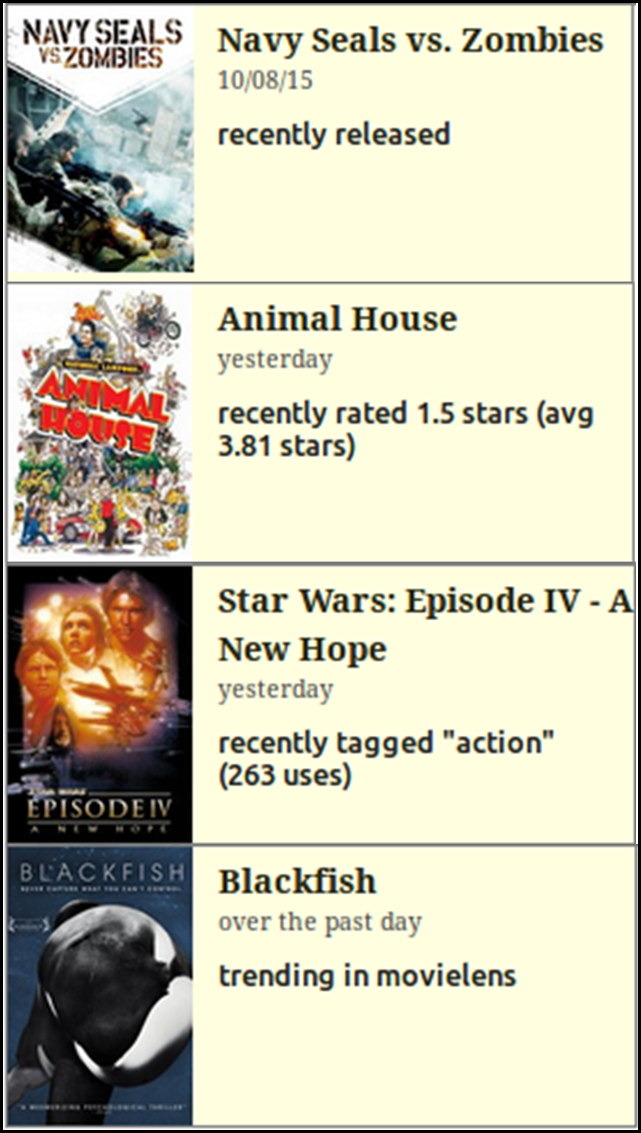Building Feeds Without Friends

This project explored feeds as a mechanism of introducing dynamism into static item-based recommender systems. Most recommender systems/websites (such as Netflix, Goodreads, Spotify, Amazon, etc.) rely on the value of their items (such as movies, books, music, products) for people's continued usage of the recommender. People use these websites primarily to seek recommendations for the product presented. However, given this item-centric nature of these websites, they often become static--the information presented on them only changes when new items are added to the site or when people's tastes change considerably (and they make these changes known to the system).
Feeds are a mechanism employed by many social media websites to prevent an overload of social/user-based content, with the additional advantage of providing a dynamic, engaging feature. Considering these benefits of feeds, we wondered whether their benefits would translate to an item-based context (such as recommender systems).
To test this application, we designed a feed for MovieLens, a movie recommender website, using content generators that were item-dependent instead of user data-dependent. We conducted a survey with 177 users, asking them about their preferences for these feed items (Figure above), and used both quantitative and qualitative methods for analysing the data collected.
Publication:
H. Kaur, H. Miller, L. Terveen: Building Feeds Without Friends. University of Minnesota Undergraduate Research Symposium (2016). Minneapolis, MN